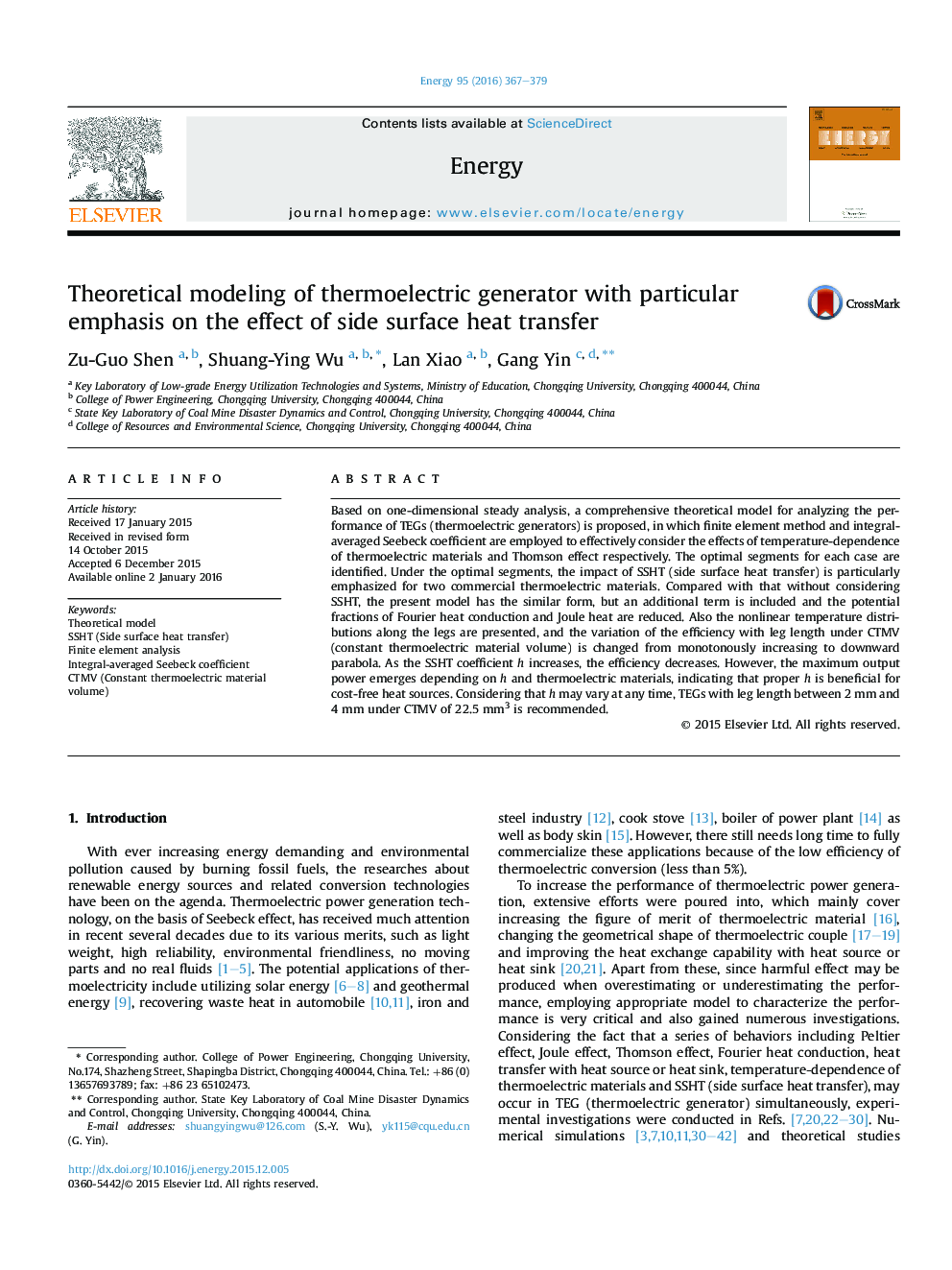| Article ID | Journal | Published Year | Pages | File Type |
|---|---|---|---|---|
| 1731441 | Energy | 2016 | 13 Pages |
Abstract
Based on one-dimensional steady analysis, a comprehensive theoretical model for analyzing the performance of TEGs (thermoelectric generators) is proposed, in which finite element method and integral-averaged Seebeck coefficient are employed to effectively consider the effects of temperature-dependence of thermoelectric materials and Thomson effect respectively. The optimal segments for each case are identified. Under the optimal segments, the impact of SSHT (side surface heat transfer) is particularly emphasized for two commercial thermoelectric materials. Compared with that without considering SSHT, the present model has the similar form, but an additional term is included and the potential fractions of Fourier heat conduction and Joule heat are reduced. Also the nonlinear temperature distributions along the legs are presented, and the variation of the efficiency with leg length under CTMV (constant thermoelectric material volume) is changed from monotonously increasing to downward parabola. As the SSHT coefficient h increases, the efficiency decreases. However, the maximum output power emerges depending on h and thermoelectric materials, indicating that proper h is beneficial for cost-free heat sources. Considering that h may vary at any time, TEGs with leg length between 2Â mm and 4Â mm under CTMV of 22.5Â mm3 is recommended.
Related Topics
Physical Sciences and Engineering
Energy
Energy (General)
Authors
Zu-Guo Shen, Shuang-Ying Wu, Lan Xiao, Gang Yin,
